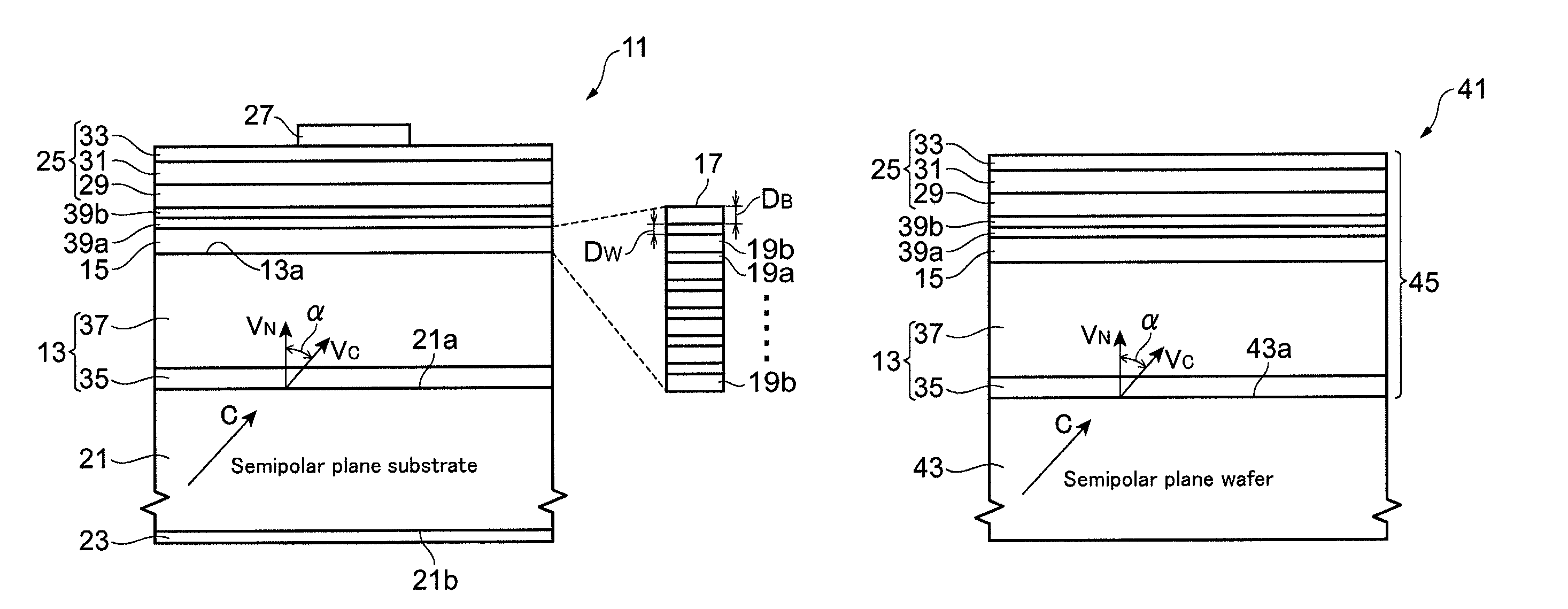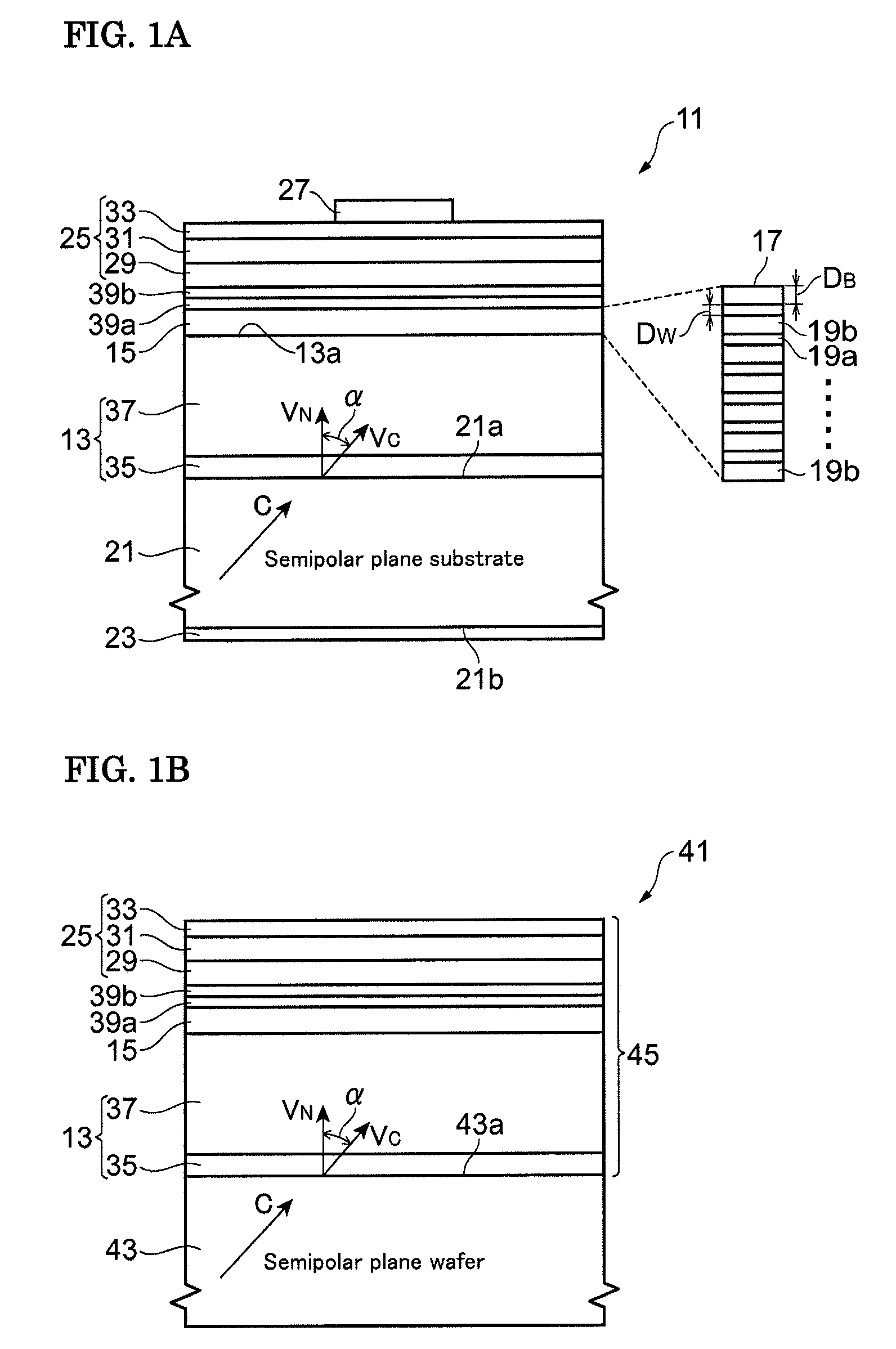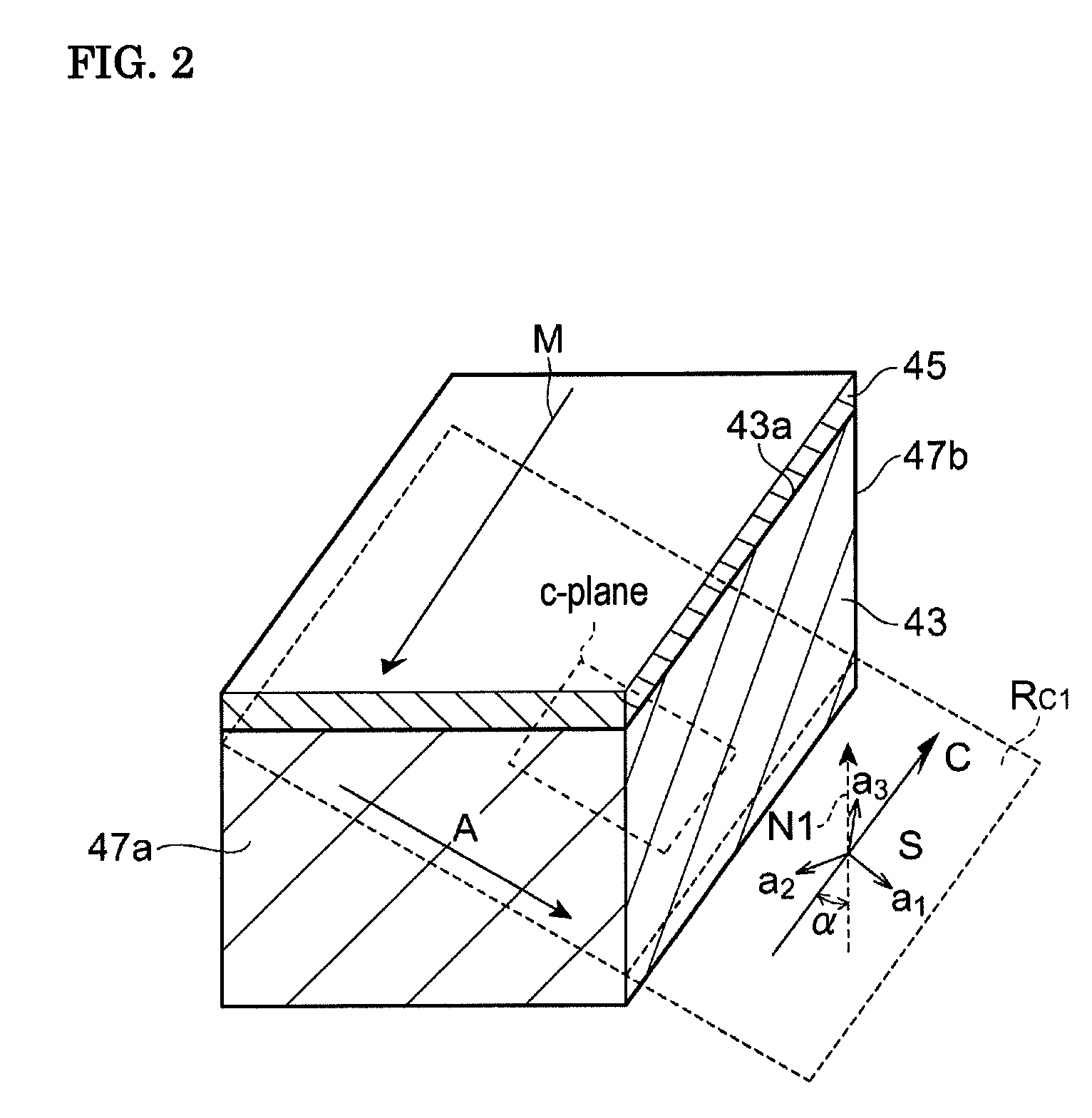Group-III nitride light-emitting device
a light-emitting device and nitride technology, applied in the direction of solid-state devices, lasers, semiconductor lasers, etc., can solve the problems of difficult growth of the ingan well layer, significant blue shift of wavelength along with current injection, and inability to achieve the effect of improving the quantum efficiency, so as to improve the quantum efficiency of the light-emitting device, improve the crystal quality of the barrier layer, and increase the incorporation of indium atoms into the well layer
- Summary
- Abstract
- Description
- Claims
- Application Information
AI Technical Summary
Benefits of technology
Problems solved by technology
Method used
Image
Examples
example 1
[0086]A flow 100a of key steps for producing a light-emitting device will be described with reference to FIG. 4. In Step S101, a GaN wafer was prepared. The resulting GaN wafer exhibited n-type conductivity and had a basal plane inclined at an inclination angle of 25 degrees from a c-plane in the direction of an m-axis. The GaN wafer was produced as described below. A 2-inch-size GaAs wafer was prepared. A stripe-shaped insulating mask composed of a silicon oxide was formed on the GaAs wafer having a (111) plane which was 25 degrees off in a (100) direction. Thereafter, a GaN thick film was grown on the resulting wafer by an HVPE method. The GaN thick film included low-defect-density regions and high-defect-density regions arranged alternately. Each of the low-defect-density regions and high-defect-density regions took on the shape of a stripe. Threading dislocation in the low-defect-density region extended in the direction of the c-axis, and the threading dislocation density thereo...
example 2
[0097]Key steps for producing the light-emitting device will be described again with reference to FIG. 4. In the manufacturing method of the present example, Step S109 is conducted after Step S103 prior to Step S104.
[0098]In Step S109, an In0.02Ga0.98N layer was grown on the n-type GaN layer. In Step S104, the quantum well structure including 3 well layers was formed on the In0.02Ga0.98N layer. The well layer and the barrier layer of the active layer had the thicknesses of 5 nm and 15 nm, respectively. Subsequently, a p-type GaN based semiconductor region was grown by using the same steps as in Example 1, so that an epitaxial wafer including an LED epitaxial structure was produced.
[0099]The resulting epitaxial wafer was taken out of the reactor. In Step S108, a translucent p-side electrode 400 μm square was formed on the p-type GaN layer of the epitaxial wafer and, in addition, an n-side electrode was formed on the back surface of the GaN wafer so as to produce a substrate product. ...
example 3
[0101]Key step for producing a laser diode device will be described with reference to FIG. 6. A GaN wafer produced as in Example 1 was prepared. The resulting GaN wafer had a basal plane inclined at an inclination angle of 25 degrees from a c-plane in the direction of an a-axis. The GaN wafer included low-defect-density regions and high-defect-density regions arranged alternately. Each of the low-defect-density regions and high-defect-density regions took on the shape of a stripe. Threading dislocations in the low-defect-density region extended in the direction of the c-axis, and the threading dislocation density thereof was less than 1×106 cm−2 in the c-plane. A laser diode device was produced on the GaN wafer by an organic metal chemical vapor deposition method on the basis of the procedure described below. In Step S102, the GaN wafer was placed on a susceptor in a growth reactor, was suspended once, and the substrate temperature was changed to 870° C. Thereafter, nitrogen was ser...
PUM
 Login to View More
Login to View More Abstract
Description
Claims
Application Information
 Login to View More
Login to View More - R&D
- Intellectual Property
- Life Sciences
- Materials
- Tech Scout
- Unparalleled Data Quality
- Higher Quality Content
- 60% Fewer Hallucinations
Browse by: Latest US Patents, China's latest patents, Technical Efficacy Thesaurus, Application Domain, Technology Topic, Popular Technical Reports.
© 2025 PatSnap. All rights reserved.Legal|Privacy policy|Modern Slavery Act Transparency Statement|Sitemap|About US| Contact US: help@patsnap.com



